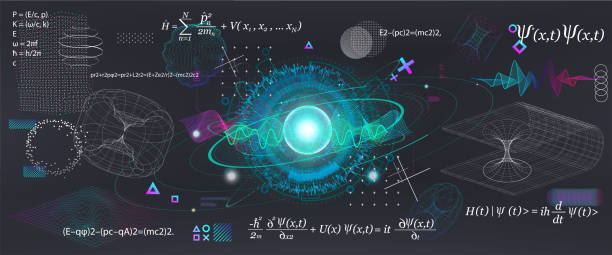Quantum physics is one of the most fascinating yet complex branches of science, exploring the behavior of matter and energy at atomic and subatomic levels. With principles such as superposition, entanglement, and uncertainty, it challenges traditional ideas of how the physical world works. But despite its complexity, modern computational tools like MATLAB are making it easier for students, researchers, and professionals to model and simulate quantum systems.
In this blog post, we will explore how quantum physics simulations can be carried out with MATLAB, why they matter, and how MATLAB writing enhances learning and problem-solving in this field.
Understanding the Role of Quantum Physics Simulations
Quantum mechanics involves abstract mathematical formulations that can be difficult to visualize. Simulations bridge this gap by providing numerical solutions and graphical representations of quantum systems. For example, simulating a quantum particle in a potential well, modeling wavefunctions, or examining quantum tunneling phenomena can all be effectively handled with MATLAB.
By using computational approaches, researchers can test theories, predict experimental outcomes, and explore systems that would be impossible to study through direct observation alone.
Why MATLAB for Quantum Physics?
MATLAB (Matrix Laboratory) is a powerful computing environment designed for mathematical modeling, algorithm development, and data visualization. Its features make it particularly suitable for quantum simulations:
1. Matrix Operations and Linear Algebra
Quantum mechanics is fundamentally based on linear algebra. States are expressed as vectors, and operators are represented as matrices. MATLAB is optimized for matrix operations, making it ideal for tasks such as eigenvalue computations, unitary transformations, and solving systems of equations.
2. Visualization Tools
Understanding wavefunctions, probability densities, and time evolution often requires graphical output. MATLAB provides high-quality visualization, including 2D and 3D plots, animations, and interactive interfaces.
3. Built-in Toolboxes
MATLAB has extensive toolboxes for differential equations, optimization, and control systems. These enhance its applicability in solving Schrödinger equations, simulating quantum harmonic oscillators, and modeling particle dynamics.
4. Customizable Scripts
Unlike rigid software packages, MATLAB allows users to write scripts and functions tailored to their specific quantum models. This flexibility helps students practice algorithm writing while enabling researchers to simulate complex systems efficiently.
Key Areas of Quantum Physics Simulations with MATLAB
Quantum Particle in a Box
One of the most fundamental quantum problems is a particle confined in a potential well (or box). Using MATLAB, one can numerically solve the Schrödinger equation, plot eigenfunctions, and visualize energy levels.
Quantum Harmonic Oscillator
The harmonic oscillator is central to quantum physics, modeling everything from molecular vibrations to field quantization. MATLAB allows precise simulation of wavefunctions and probability distributions.
Quantum Tunneling
Quantum tunneling where particles pass through potential barriers despite insufficient energy is a counterintuitive concept. MATLAB simulations make tunneling probabilities and transmission coefficients more comprehensible.
Superposition and Wave Packet Evolution
Simulating wave packet dynamics allows exploration of superposition, interference, and time evolution. MATLAB’s numerical solvers help track how quantum states evolve under different potentials.
Quantum Computing Basics
With the growing importance of quantum computing, MATLAB is increasingly used to simulate quantum gates, qubits, and algorithms. By representing qubits as vectors and gates as matrices, MATLAB provides a platform for experimenting with quantum information theory.
Steps to Write MATLAB Simulations for Quantum Physics
Writing MATLAB simulations requires both programming skill and an understanding of quantum theory. Below are key steps:
Step 1: Define the Physical System
Start by identifying the system to simulate, such as a particle in a well, a harmonic oscillator, or a tunneling barrier. Set parameters like mass, potential shape, and boundary conditions.
Step 2: Translate Equations into Numerical Form
Quantum systems are governed by differential equations, especially the Schrödinger equation. Discretize the problem using finite difference methods or matrix formulations.
Step 3: Implement MATLAB Code
Write MATLAB scripts that handle matrix definitions, apply operators, and compute eigenvalues or time evolution. Use built-in functions like eig, ode45, or Fourier transforms for efficiency.
Step 4: Visualize Results
Plot wavefunctions, probability densities, or energy levels. For time evolution, create animations to track how states change.
Step 5: Validate and Interpret
Compare simulation results with theoretical predictions. This step ensures that coding mistakes or numerical approximations don’t distort the physics.
Example: Simulating a Particle in a Box
Here’s a simplified outline of how MATLAB can simulate a particle in a 1D infinite potential well:
-
Define parameters: box length, mass of particle, and Planck’s constant.
-
Discretize space into grid points.
-
Construct the Hamiltonian matrix using finite difference approximations.
-
Solve for eigenvalues and eigenfunctions using MATLAB’s
eigfunction. -
Plot the wavefunctions to visualize stationary states.
This approach can be extended to higher dimensions or more complex potentials, providing a versatile learning experience.
Educational Benefits of MATLAB Writing in Quantum Physics
MATLAB writing is not just about coding it enhances understanding of abstract physics concepts. Here’s how:
-
Bridging Theory and Practice: Writing MATLAB code requires students to translate equations into algorithms, deepening conceptual understanding.
-
Critical Thinking Development: Debugging code encourages problem-solving skills and logical reasoning.
-
Visualization of Abstract Concepts: Seeing wavefunctions evolve in real time makes difficult concepts more accessible.
-
Preparation for Research and Careers: MATLAB proficiency is valued in academia, industry, and research institutions dealing with quantum technologies.
Research and Industry Applications
Quantum physics simulations with MATLAB are not limited to classrooms. They are actively used in research and industry:
-
Material Science: Simulating electronic band structures, nanostructures, and quantum dots.
-
Photonics: Modeling light-matter interactions and waveguides.
-
Quantum Information: Simulating qubits, gates, and quantum error correction codes.
-
Control Systems in Quantum Devices: Designing control algorithms for superconducting qubits or trapped ion systems often requires MATLAB expertise, where students can benefit from resources such as best control system matlab assignment writing help.
Challenges in Quantum Simulations with MATLAB
While MATLAB is powerful, quantum simulations come with challenges:
-
Computational Cost: Large quantum systems require high processing power due to exponential scaling.
-
Numerical Instability: Approximation methods may lead to inaccuracies if not carefully implemented.
-
Steep Learning Curve: Students must balance learning both quantum theory and programming skills.
Despite these hurdles, consistent practice and guided support make MATLAB simulations an invaluable learning tool.
Future of MATLAB in Quantum Research
As quantum technologies advance, MATLAB will continue to play a significant role. With increasing emphasis on hybrid quantum-classical systems, MATLAB’s integration with hardware and its compatibility with Python or C++ makes it adaptable for emerging research.
Additionally, educational institutions are incorporating MATLAB-based quantum physics modules into their curriculum, ensuring future scientists are equipped with both theoretical and computational expertise.
Final Thoughts
Quantum physics simulations with MATLAB writing provide a powerful way to bridge the gap between abstract theory and practical application. Whether modeling basic systems like a particle in a box or exploring cutting-edge quantum computing, MATLAB empowers learners and researchers to simulate, visualize, and analyze complex phenomena.
For students, writing MATLAB code enhances both technical and conceptual understanding, while for researchers, it opens the door to advanced modeling and real-world applications. As quantum science continues to shape the future, MATLAB remains a key ally in bringing theoretical physics to life through computation.





